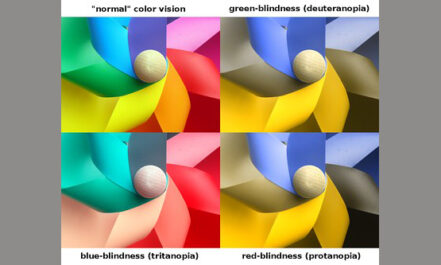
Colour blindness
John Dalton (1766-1844) from Cumberland, compiler of the first atomic theory, was also the first scientist to study colour blindness, after discovering it in himself and his brother in 1794. It is a condition which is better referred to as ‘colour vision deficiency’ since there is a range of effects depending on the functioning of the retina’s cone cells. It is more common in men (8%) than women (0.5%).
In his 1798 paper, ‘Extraordinary Facts Relating to the Vision of Colours, with Observations’, Dalton correctly surmised that it is hereditary. However, his theory on its cause being a bluish tinge to the vitreous was found to be incorrect upon his death, when his own eyes were dissected as he had requested. Nevertheless, colour blindness is also known as Daltonism.
Professor John Mollon (University of Cambridge) and Dr Gabriele Jordan (Newcastle University) began studying the other end of the spectrum in the late 1980s, namely tetrachromacy. This allows a female to see 100 times more shades than the normal million, due to an extra type of cone cell. They finally found such a woman in 2014 but in 2019 their joint paper, ‘Tetrachromacy: the mysterious case of extra-ordinary colour vision’, concluded that this remains a complex research topic.
(Image: Johannes Ahlmann at Flickr.com / CC BY 2.0)
